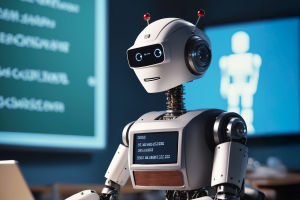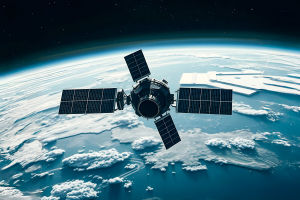With the increasing number of satellites launched into orbit, there are growing concerns about the congestion in space and its potential consequences for space exploration. Lykkers, let's see how is the situation so far!
In recent years, private companies have rapidly expanded satellite networks, raising concerns about their impact on scientific missions and space safety. This article explores the growing satellite traffic and its effects on space activities.
Growth of Satellite Networks
Massive Increase in Satellites
The number of satellites in Earth's orbit has skyrocketed in recent years, with significant increases in satellite launches. According to the United Nations Office for Outer Space Affairs, as of April 2021, over 11,000 satellites have been launched into space since the beginning of the space age.
Of these, approximately 7,300 remain in orbit, with around 4,000 still operational. In 2020 alone, more than 1,200 satellites were launched.
This rapid expansion is largely driven by private companies, which are creating large-scale satellite constellations to provide services like global internet coverage. The most notable of these is the Starlink project by SpaceX, which has already launched over 2,000 satellites. Other companies, including OneWeb and Amazon, have similar plans to launch thousands of satellites in the coming years.
Increased Space Debris
Along with the functioning satellites, space is also crowded with debris, such as rocket stages, satellite fragments, and even paint chips. These objects travel at speeds of up to 28,000 kilometers per hour, which poses a risk to operational satellites.
The U.S. government tracks over 20,000 pieces of debris larger than 10 centimeters. However, there are millions of smaller pieces that are harder to monitor but still pose significant risks.
The growing number of satellites and debris in orbit has led to concerns about collisions. These collisions could create more debris, leading to a dangerous cycle of increasing space clutter. This issue is becoming more pressing as the number of satellites continues to rise.
Impacts on Space Exploration
Risk of Satellite Collisions
The rapid increase in satellite traffic has raised alarms regarding the potential for collisions in low Earth orbit (LEO). LEO, which lies between 80 and 2,000 kilometers above Earth, is becoming increasingly crowded.
Satellites like those in the Starlink constellation are positioned at around 500 kilometers, which is relatively low compared to traditional satellites that operate at higher altitudes.
The risk of collisions is a serious concern, as even small pieces of debris traveling at high speeds can cause significant damage to satellites. If a collision occurs, it can create more debris, which may lead to further impacts, causing a chain reaction known as the Kessler Syndrome. This scenario involves a cascade of collisions that could render space near Earth unusable for future missions, severely hindering space exploration efforts.
Disruption of Scientific Research
The overcrowding of space also poses a threat to scientific research. Telescopes like the Hubble Space Telescope, which has been orbiting Earth since 1990, are already experiencing disruptions due to the increasing number of satellites.
Estimates suggest that 8% of the images taken by Hubble are affected by satellite interference. Furthermore, the International Space Station (ISS), which orbits at about 400 kilometers, is also at risk. The proximity of new satellite constellations could limit the available space for research and increase the risk of collisions.
As more satellites are launched into LEO, the potential for interference with scientific instruments and the ISS grows. This could limit the ability of scientists to conduct experiments and gather data, which could have far-reaching consequences for space research.
Future Outlook
Space around Earth is limited, and the rapid growth in satellite traffic is highlighting the need for new regulations. Currently, there are no comprehensive international agreements governing the use of orbits, which has contributed to the current congestion. The United Nations Office for Outer Space Affairs is working to update existing guidelines, but these processes take time, and the satellite traffic continues to grow.
As the "space economy" expands, the number of satellites and debris in orbit is expected to increase, creating challenges for both commercial and scientific space activities. It is crucial to find ways to manage this growth in a way that minimizes risks to space exploration and scientific progress.
Conclusion
The rapid expansion of satellite networks and the growing issue of space debris are becoming significant challenges for space exploration. As more private companies enter the space sector and launch thousands of satellites, the risk of collisions and disruption to scientific research continues to rise.
Effective regulation and cooperation among international space agencies will be necessary to ensure the sustainable use of space and protect the future of space exploration. The next few years will be crucial in determining how we address the increasing congestion in Earth's orbit and the potential consequences for future missions.


